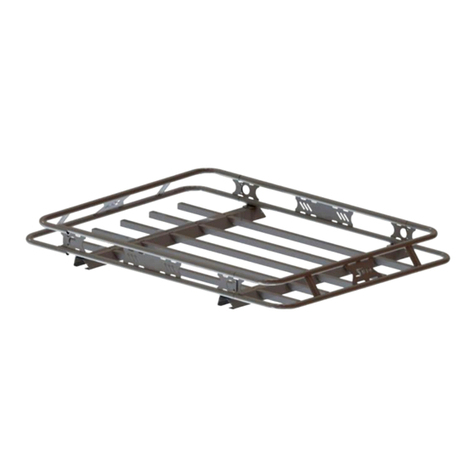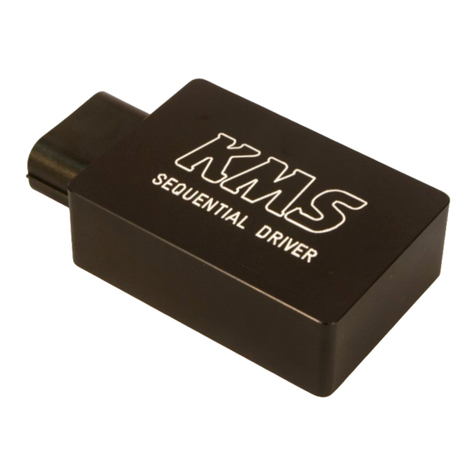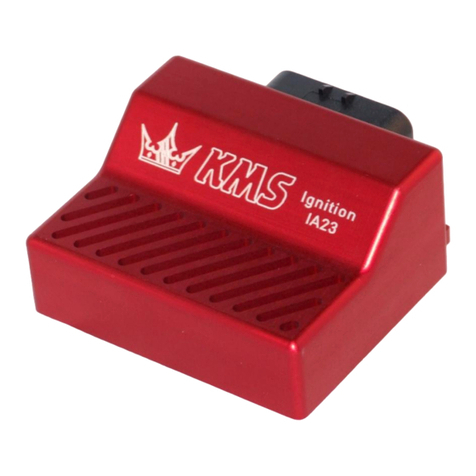KMS MA-5 manual
Version 5.1 2
Contents
1KMS (Kronenburg Management Systems).................................................................................................................... 3
2Software installation....................................................................................................................................................... 5
3KMS software.................................................................................................................................................................. 6
3.1 Main Screen.......................................................................................................................................................... 6
3.1.1 The Injection or Ignition table............................................................................................................................ 7
3.1.1.1 The injection characteristic diagram ....................................................................................................... 7
3.1.1.2 The ignition characteristic diagram......................................................................................................... 8
3.1.2 The communication bar .................................................................................................................................... 9
3.1.3 The function bar................................................................................................................................................ 9
3.2 Open file ............................................................................................................................................................. 10
3.3Save file.............................................................................................................................................................. 10
3.4 Options............................................................................................................................................................... 10
3.4.1 Options........................................................................................................................................................... 11
3.4.1.1 RPM pickup.......................................................................................................................................... 12
3.4.1.2 RPM limiters and PowerShift................................................................................................................ 16
3.4.1.3 Engine load sensor............................................................................................................................... 18
3.4.1.4 Start-up................................................................................................................................................ 22
3.4.1.5 Throttle pump effect ............................................................................................................................. 22
3.4.1.6 Interpol. to limits and Fuel cut............................................................................................................... 23
3.4.1.7 Hardware configuration ........................................................................................................................ 24
3.4.1.8 Lambda-control.................................................................................................................................... 25
3.4.1.9 Boost control........................................................................................................................................ 32
3.4.1.10 A.L.S.................................................................................................................................................... 37
3.4.1.11 AUX 1 .................................................................................................................................................. 38
3.4.1.12 AUX 2 .................................................................................................................................................. 38
3.4.1.13 AUX 3 ................................................................................................................................................. 38
3.4.1.14 External Dashboard............................................................................................................................. 39
3.4.1.15 Remarks.............................................................................................................................................. 40
3.4.1.16 Communication port............................................................................................................................. 40
3.4.2 Output test...................................................................................................................................................... 41
3.4.3 Crankshaft sensor test.................................................................................................................................... 41
3.4.4 Motor + system diagnostics ............................................................................................................................ 42
3.4.5 Change user access level............................................................................................................................... 45
3.5 Correction tables................................................................................................................................................ 46
3.6 Idle control ......................................................................................................................................................... 48
3.7 Up / down load function..................................................................................................................................... 49
3.8 Lambda function................................................................................................................................................ 49
3.9 Interpolation function ........................................................................................................................................ 49
3.10 Online / Offline ................................................................................................................................................... 50
3.11 Switch Injection/Ignition.................................................................................................................................... 51
3.12 Help..................................................................................................................................................................... 51
3.13 Communicationport........................................................................................................................................... 51
3.14 Shortcuts............................................................................................................................................................ 51
4Programming................................................................................................................................................................ 52
4.1 Manual changing boxes..................................................................................................................................... 52
4.2 Bar charts adjustment ....................................................................................................................................... 52
4.3 3D graph changing............................................................................................................................................. 53
4.4 Loading correction maps .................................................................................................................................. 53
5Hardware installation ................................................................................................................................................... 54
5.1 ECU specifications............................................................................................................................................. 55
6Troubleshooting ........................................................................................................................................................... 56
7Specifications............................................................................................................................................................... 59
8Appendix 1: Trigger pattern drawings......................................................................................................................... 60






























